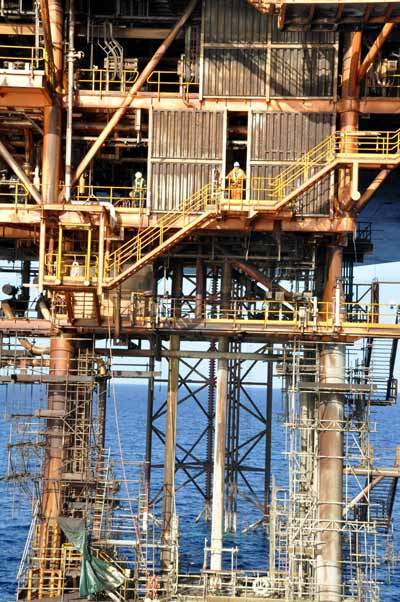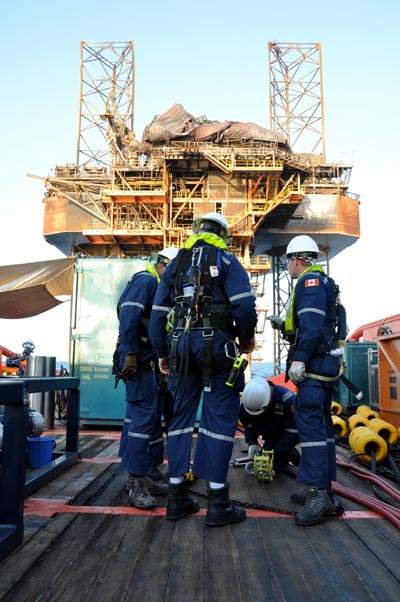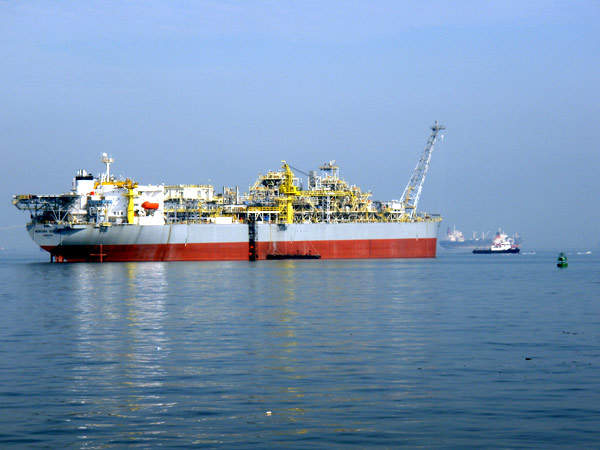The Montara oil and gas field is located in the northern territory in block AC/RL3 650km west of Darwin in the Timor Sea, off northern Australia. Montara has recoverable reserves of 24 million barrels and is expected to produce 35,000bopd of light, low-sulphur crude.
The field is located in about 80m of water and has a 10m oil column and a 25m gas column. Montara has four oil-producing wells, including a gas re-injection well and its production life is estimated to be 12 years.
Montara was first discovered in March 1988 by BHP Billiton. Australian oil project developer Coogee Resources took over as the operator of the field in September 2003. In December 2008, PTT Exploration & Production, a Thailand-based petroleum and natural gas explorer, acquired Coogee for $170m. The company was renamed as PTTEP Australasia (PTTEP AA).
The deal gave PTTEP 100% control over the Montara development project, which includes Montara, Skua, Swift and Swallow fields. A total of ten wells, nine oil producers and one gas injection well are part of the Montara development project.
Delays
Production was originally expected in 2008, but was delayed to 2010 due to the change in ownership. In August 2009, the Montara development project suffered another delay as PTTEP reported oil and gas spills at a drilling well in the Montara field.
On 1 November 2009, a fire broke out at the West Atlas oil rig and the Montara well head platform during an attempt made to plug the leak in the well. The well leaked about 400bopd and an unspecified amount of condensate and natural gas into the Timor Sea before finally being plugged on 3 November 2009. First oil production from the Montara oil field is now expected in the third quarter of 2011.
Montara Venture platform
For the Montara development project Coogee planned to use a floating, production, storage and offloading (FPSO) vessel with tie-backs planned to the Skua, Swift and Swallow fields. A 146,251dwt tanker, Freeway, was converted into an FPSO by Tanker Pacific in 2009 in Jurong Shipyard.
The conversion process of the Freeway tanker involved extension of life for continuous service on site for a minimum of 20 years without dry docking. Conversion work also involved installation of a unique and flexible internal submerged turret production (STP) system. The STP was supplied by Norway’s Advanced Production and Loading. Other conversion works included processing provisions for crude separation and gas compression, and reinjection facilities.
WorleyParsons, an Australian professional services provider for the oil and gas industry, designed the Montara platform. The design team had a tough time planning the platform due to the weak soils at the location of the oil field. In addition the marine environment was subject to cyclonic storms, which further created challenges for the design team. Designing of the platform required significant analysis to optimise the pile configuration to sustain an even distribution of pile head weight.
A total of nine piles in an optimised configuration at the bottom of the substructure were created. The nominal launch weight was 2,192t and the structure was set up base first.
The modern jacket design of the platform included a four-legged launch tower structure, which eliminated the need for a heavy-lift vessel for installation. This, in turn, translated into lower costs for Coogee.
The jacket was designed to overcome foundation requirements of a maximum of 25m pile penetration. Clough, an Australian engineering and construction company, was responsible for installation of the platform. On 7 August 2009, using its pipelay barge Java Constructor, Clough lifted and set the 750t Montara topside on the jacket. Technip carried out the project concept engineering of the platform.
FPSO Montara Venture
The FPSO was named Montara Venture on conversion and will be permanently moored in a water depth of 80m. The FPSO consists of a four-level 750t wellhead platform, which can fit five production wells and one gas-injection well.
It has an additional slot for future wells and has the capacity to accept a subsea tie-back in the future. The topside of the platform contains a helideck, crane, dry wellhead trees, production manifold, gas re-injection wellhead and multi-phase flow metering equipment. The FPSO is capable of handling 40,000bpd 60 million cubic feet a day of gas compression for re-injection/lift, and has a storage capacity of 900,000 barrels of oil. Final delivery, hook-up and commissioning of the Montara Venture FPSO is still pending following the leak in August 2009.
West Atlas drilling rig
SeaDrill provided the offshore drilling rig West Atlas to Coogee for the Montara field development. West Atlas is an independent leg cantilever type Jack-up. The rig was designed and built in 2007 by Keppel Fels at the Keppel Shipyard in Singapore. The rig can work at a water depth of 400ft and has a drilling depth of 30,000ft.
On 4 December 2009, the West Atlas drilling rig was formally condemned by its insurers after it caught fire in November 2009. SeaDrill will carry out the removal process of the West Atlas drilling rig from the Montara field. Following detailed inspection by structural and equipment experts, the removal process will be carried out by specialist contractors.
Field development
Coogee planned the development of the Montara project in two phases with an investment of $700m. Phase one included development of six production wells and one infection well. Phase two included development of three production wells. Coogee initiated a phased development of the field to enable inclusion and optimisation of wells in phase two, on dynamic reservoir results from phase one. The four horizontal oil wells, including a gas re-injection well of the Montara field, were batch drilled and suspended.
Production from phase one was originally anticipated in 2008, but was delayed due to change in ownership and the leak in August 2009. The final phase of drilling and running completions are scheduled for 2011. The entire wells from the Montara, Skua, Swift and Swallow fields are planned to be tied back to the Montara wellhead platform and the Montara FPSO.
Subsea system
Coogee decided to use a subsea tie-back system for the Montara field development, which provided greater flexibility on FPSO location and reduced mobilisation charges. The subsea system was supplied by JDR Umbilical Systems in October 2006. It included four umbilicals with a total length of 30km and weight of 1,000t. The umbilicals included thermoplastic hoses for hydraulic and chemical functions, 3.6kV electric power cores and fibre optic cables.
The development method adopted by Coogee required subsea umbilical joint hardware to enable vertical reel deployment. In addition, the umbilicals were expected to be subject to substantial forces in the sea and from the FPSO. The joints of the umbilicals were, therefore, required to have a level of integrity similar to that of a single unjointed length. These factors were taken into consideration while designing, testing and engineering of the umbilicals.
The dynamic segment of the FPSO umbilical was set up in a steep wave form with buoyancy modules. A modelled catenary shape was created using the module that was fitted to the umbilical. Due to the complicated nature of the project, a lower buoyancy module was needed to be positioned just 8m over the seafloor. This required a prominent active bend restrictor at the riser base and a subsea vertebrae bend limiter on the static side for passage to the seafloor.
Contracts
In February 2009, Clough was awarded a contract worth $75m for the installation of the offshore facilities for the Montara field development. The scope of work for Clough included transportation and fitting of the Montara wellhead platform deck, the 285t mooring buoy with nine related mooring legs, 26km of infield pipelines and a 100t Swift subsea manifold. The Clough contract, however, was terminated in November 2009 when the wellhead started leaking in August 2009.
In June 2007, VetcoGray, part of GE’s oil and gas business, was awarded a contract worth $26m for the supply of subsea production trees and controls. The contract included supply of four 13 5/8in horizontal trees on mudline systems, which will be the first ever systems to be installed in the Asia Pacific / Middle East regions. The contract also included wellheads and control systems for subsea control modules, topside controls and subsea distribution and instrumentation.
In February 2007, Tanker Pacific awarded a contract worth $40m to APL for the submerged turret mooring system for the FPSO.
In December 2006, Jurong Shipyard, a wholly owned subsidiary of SembCorp Marine, was awarded a $58m contract by Tanker Pacific for conversion of the Freeway Tanker into an FPSO. Mitsubishi Heavy Industries carried out engineering on the vessel and NKT Flexibles was responsible for the riser system.
Independent Offshore Solutions, an oil and gas project management and engineering services provider, was chosen in August 2006 to carry out the offshore installation of the pipeline, subsea systems, wellhead platform and FPSO.





